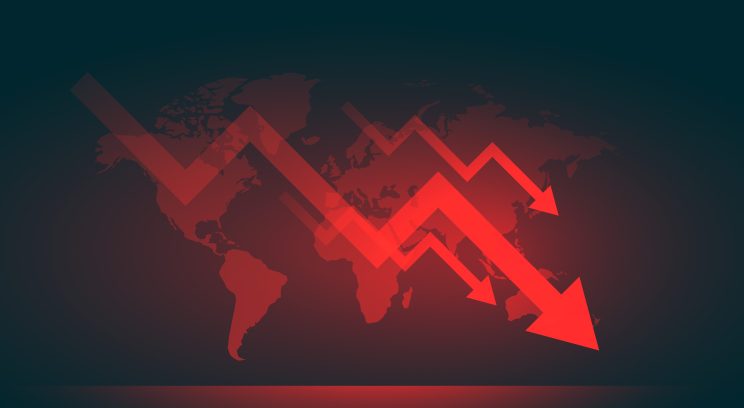August report: JSE follows global equity markets lower
Investment conglomerates Naspers and Prosus falling 8.2% MoM in aggregate terms weighed heavily on the local bourse, writes Anchor Capital’s Peter Little.

Last month the South African stock market followed global equity markets lower (the FTSE/JSE Capped SWIX Index was down 4.8% month-on-month (MoM)), leaving local equities only slightly positive, up 2.8%, for the year-to-date (YTD) at end August.
Mining stocks were the biggest drag on the JSE in August, down 9% MoM, as weak Chinese economic activity weighed on metal prices. Platinum miners were by far the worst of a bad bunch, falling 20% MoM, as the major platinum miners all reported disappointing results, characterised by weak volumes and elevated costs.
Investment conglomerates Naspers and Prosus (-8.2% MoM in aggregate) also weighed heavily on the local bourse, as their largest underlying investment, Chinese tech conglomerate Tencent, fell 7.3% MoM in Hong Kong dollar terms.
Despite the poor month for stocks, some of the local blue-chip financial counters eked out a positive performance in August (FirstRand +0.8%, Investec +3.2%, Standard Bank +1.2% and Sanlam +3.6%).
Local education companies were also a rare bright spot, after releasing strong results with solid double-digit earnings growth (Stadio +20%, Curro +16% and AdvTech +11%).
SA inflation data showed price growth slowing faster than anticipated to 4.7% YoY in July (relative to expectations for a 4.9% YoY print), as inflation slowed towards the mid-point of the SA Reserve Bank’s range, reaching the lowest level in two years.
As US 10-year rates hit a 16-year high mid-month, SA 10-year government bond yields pushed above 12% p.a. before settling at 11.7% p.a. at month end.
While all major currencies (except for the Turkish lira) were weaker against the US dollar in August, the rand’s 5.4% MoM decline was only topped by the Argentine peso (-19.4% MoM), and it leaves the local currency down 9.6% YTD (end August).
World equity markets stumble …
Global equity markets stumbled in August (MSCI World -2.3% MoM) but remained solidly in positive territory YTD (MSCI World +16.6% YTD to end August).
Despite the bulk of the year’s equity market returns coming from US-domiciled, mega-cap tech and chip companies, this area of the market still held up relatively well (S&P 500 -1.6% MoM, NYSE Fang+ Index -2.5% MoM). The S&P 500’s second-quarter corporate results season wrapped up with earnings marginally down (-2.6% YoY) but circa 6% ahead of consensus analyst expectations.
The yield-sensitive sectors were unsurprisingly the worst-performing cohort in August, with the real estate, consumer staples and utility sectors of the S&P 500 Index down 3%, 3.6% and 6.2% MoM, respectively. Energy shares (+1.8% MoM) were the best-performing sector for a second consecutive month, as Brent crude oil (+1.5% MoM) clawed its way back into positive territory for the year (+1.1% YTD – end August).
European stocks struggled in August (-5.3% MoM in US dollar terms), particularly the luxury goods companies, which are heavily geared towards Chinese consumers, with Chinese economic activity continuing to disappoint in August.
The latest data showed that Chinese economic activity is still struggling to recover meaningfully post-Covid-19, with disappointing retail sales, prices slipping into deflation and falling real estate activity.
Emerging market (EM) stocks (MSCI EM -6.1% MoM) fared even worse than those in developed markets, with Chinese companies the biggest drag – particularly those listed offshore, with the indices of Chinese companies in Hong Kong and the US falling by 8.7% and 10.3% MoM, respectively, in US dollar terms.
The higher global yields were catalysed by stronger than anticipated US economic activity and consistent rhetoric from US Federal Reserve (Fed) members (via the release of the latest Fed minutes and then through the speakers at the global central bankers’ conference in Jackson Hole) that there is still room for more rate hikes with upside risks to inflation.
Higher rates dragged the US dollar with them, leaving the greenback stronger against all major currencies (except the Turkish lira, which was up 1% MoM but is still down 30% YTD to the end of August).